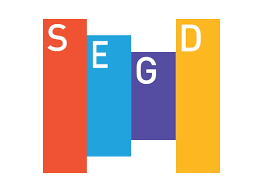Five Things You Don’t Know About Wayfinding Signs
Colleges and Universities, Exterior Signage, Others, Signage Tips, Wayfinding“Wayfinding” is a fascinating word that conveys its own meaning very clearly – which is precisely what you expect from “wayfinding signs” themselves. But it’s far from easy to create a series of signs that are unified, logical, and authoritative in design, yet variable enough to convey highly specific information clearly and unambiguously to people who are quite often in a hurry, stressed, confused, and possibly lacking in local language skills.
So it’s no surprise that, to many designers, wayfinding signage projects are among the most challenging tasks in all of signmaking, and – when satisfactorily accomplished – among the most rewarding.
Here are some interesting facts you probably don’t know about wayfinding signage:
Wayfinding Signage Should Go Beyond the Limits of Traditional Maps
Wayfinding signage is obviously aimed at “spatial” concerns: telling people where they are, allowing them to find the place(s) they want to go, and giving them clear directions regarding the best route(s) for getting there. But maps have been in use since humanity’s cave-dwelling days. Today, modern wayfinding signage must fully address far more intricate concerns than a simple map ever could.
In Some Cases, New Symbols for Wayfinding Signs May Need to be Created
There are standard American Institute of Graphic Arts symbols for wayfinding signs. But these are sometimes inadequate, needing to be augmented or modified to meet the full set of requirements involved in many wayfinding projects. For example, the basic symbol set may require adjustment to suit the designer’s choice of font for the lettering, to enhance readability, or to minimize wasted space on crowded wayfinding signs. In some locations – such as a zoo or a specialized facility – a wayfinding project may require one or more completely new symbols.
Location and Content of Wayfinding Signs are Equally Important
Wayfinding signage must find a balance between too few signs and too many. An effective wayfinding system seeks to present information at precisely the locations where users (travelers, visitors) want it, but not overload them with details. A key goal is to give people confidence so they can comfortably move toward their desired destination, and then to provide them with additional information (for example: not only distance to the destination, but also the expected travel time), as appropriate, just before they begin to feel they need it.
Utilize Natural Landmarks to Your Benefit
Major landmarks naturally provide both common destinations and excellent locations for wayfinding signage. In addition to obvious landmarks – something like the “campanile” or bell tower on a college campus – there are often lesser landmarks that signage system designers can select for use as wayfinding markers or waypoints.
Wayfinding Signage is Changing the Way We Look at Directions
Modern wayfinding signage has progressed along with the evolution of villages, towns, and – more recently – large cities. Today, wayfinding signage projects seek to present a form of visual logic that minimizes language demands and cost-effectively conveys both denotative information (“how to get there from here”) and connotative information (“look and feel,” “branding”). With smartphones so commonplace today, many people now expect the top of a map to be the direction they are moving, rather than North, which for hundreds of years was the standard.
If you have any questions about wayfinding signage, particularly how an updated, modern wayfinding signage system might be helpful to people navigating your location, we’d love to provide you with answers. Please call us at (978) 851-2424.

